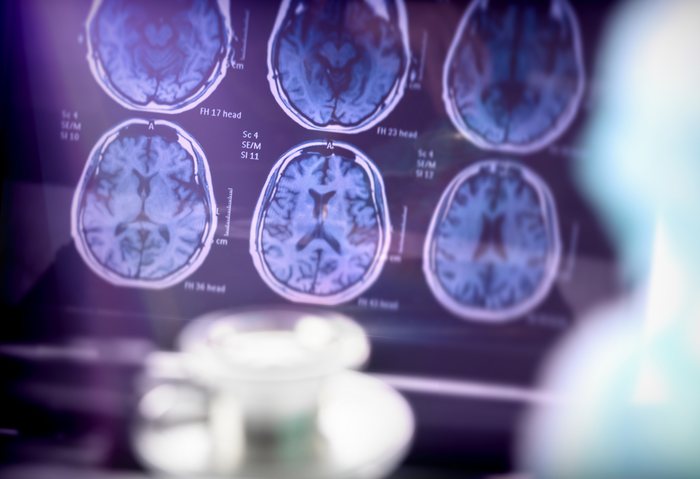Studies by scientists at Rensselaer Polytechnic Institute have found that the brain’s ability to clear a protein that builds up in the brains of patients with Alzheimer’s disease (AD) is tied to our daily circadian cycle. The research provides a potential explanation for the link between Alzheimer’s disease and disruptions to a person’s sleep cycle, and underscores the importance of healthy sleep habits in preventing the formation of amyloid-beta 42 (Aβ42) clumps in the brain. The findings could also point to potential new therapeutic strategies for Alzheimer’s disease.
“Circadian regulation of immune cells plays a role in the intricate relationship between the circadian clock and Alzheimer’s disease,” said research lead Jennifer Hurley, PhD, associate professor of biological science at Rensselaer Polytechnic Institute. “This tells us a healthy sleep pattern might be important to alleviate some of the symptoms in Alzheimer’s disease, and this beneficial effect might be imparted by an immune cell type called macrophages/microglia.”
Hurley and colleagues, including Rensselaer professors Robert Linhardt, PhD, a glycans expert and inventor of synthetic heparin, and Chunyu Wang, PhD, whose ongoing research has detailed several mechanisms in the production and spread of proteins implicated in Alzheimer’s, reported on their findings in PLOS Genetics, in a paper titled, “Circadian control of heparin sulphate levels times phagocytosis of amyloid beta aggregates.” In their report the researchers concluded, “Overall, our data suggests a role for myeloid cells in the circadian timing of the clearance of Aβ42 and an avenue through which the disruption of circadian rhythms can lead to enhanced AD pathogenesis.”
The circadian system is comprised of a core set of clock proteins that anticipate the day/night cycle by causing daily oscillations in the levels of enzymes and hormones, which ultimately affects physiological parameters such as body temperature and immune response. Disruption of the circadian system is increasingly being linked with diseases including diabetes, cancer, and Alzheimer’s disease. For example, sleep disruptions, which begin years before symptoms of Alzheimer’s disease appear, are linked to more severe symptoms and a higher risk of developing the disease.
AD is a neurodegenerative, neuroinflammatory disease that is characterized by extracellular β-amyloid (Aβ) plaques, intracellular hyperphosphorylated tau fibrils, and increased neuroinflammation. A telltale sign of Alzheimer’s disease is the formation and buildup of these extracellular clumps of Aβ42 in the brain. Macrophages (referred to as microglia when they reside in the brain), are immune cells that seek and destroy unwanted material, and they play a role in clearing Aβ42 from the brain through phagocytosis. Interestingly, the authors noted, there is a daily oscillation in the abundance of Aβ42 in cerebrospinal fluid in healthy adults, but this oscillation disappears in patients with AD. “Aβ42 abundance oscillates with a circadian period, microglia and macrophages have been shown to phagocytize Aβ42, and phagocytosis by macrophages is under circadian regulation, leading us to hypothesize that oscillations in the metabolism of Aβ42 may stem from the circadian regulation of phagocytosis in cells from myeloid lineages.”
In their earlier research, Hurley and collaborators at the Royal College of Surgeons in Ireland investigated circadian control of macrophages, and their data made it possible to see which macrophage RNA and proteins oscillate with a circadian rhythm. The researchers noticed oscillations in enzymes that help to make two proteins on the macrophage cell surface—heparan sulfate proteoglycan (HSPG) and chondroitin sulfate proteoglycan (CSPG)—both of which are known to play a role in regulating clearance of Aβ42.
Could these cell surface proteoglycans be a link between the circadian system and Alzheimer’s? Through their in vitro studies, the researchers discovered that the immune cells clear away amyloid-beta on an oscillating daily cycle that is controlled by circadian rhythms. When cells lost that rhythm, the daily cycle disappeared, so the pattern of Aβ42 clearance didn’t occur in macrophages without a circadian clock.
The investigators also measured daily oscillations in the levels of heparan sulfate proteoglycans and chondroitin sulfate proteoglycans produced on the surface of macrophages with healthy circadian cycles. Peak Aβ42 clearance occurred as the production of surface cell proteoglycans was at its lowest level, and removal of these proteoglycans increased ingestion of the amyloid protein. These results indicated that the proteoglycans inhibit Aβ42 clearance. “These data suggested that the presence of PGs suppresses the phagocytosis of Aβ42 and our investigation into the mechanism behind this suppression showed that aggregation and PG binding were essential to the circadian regulation of Aβ42 phagocytosis,” the scientists said. “Overall, our data suggests a role for myeloid cells in the circadian timing of the clearance of Aβ42 and an avenue through which the disruption of circadian rhythms can lead to enhanced AD pathogenesis.”

“Understanding how our circadian rhythms can regulate cell-surface heparan levels to control the build-up of amyloid-beta may lead to the development of chronotherapeutics that alleviate the symptoms of Alzheimer’s disease as well as other inflammatory diseases,” Hurley said. “In theory, if we could boost that rhythm, perhaps we could increase the clearance of AB42 and prevent damage to the brain.”







